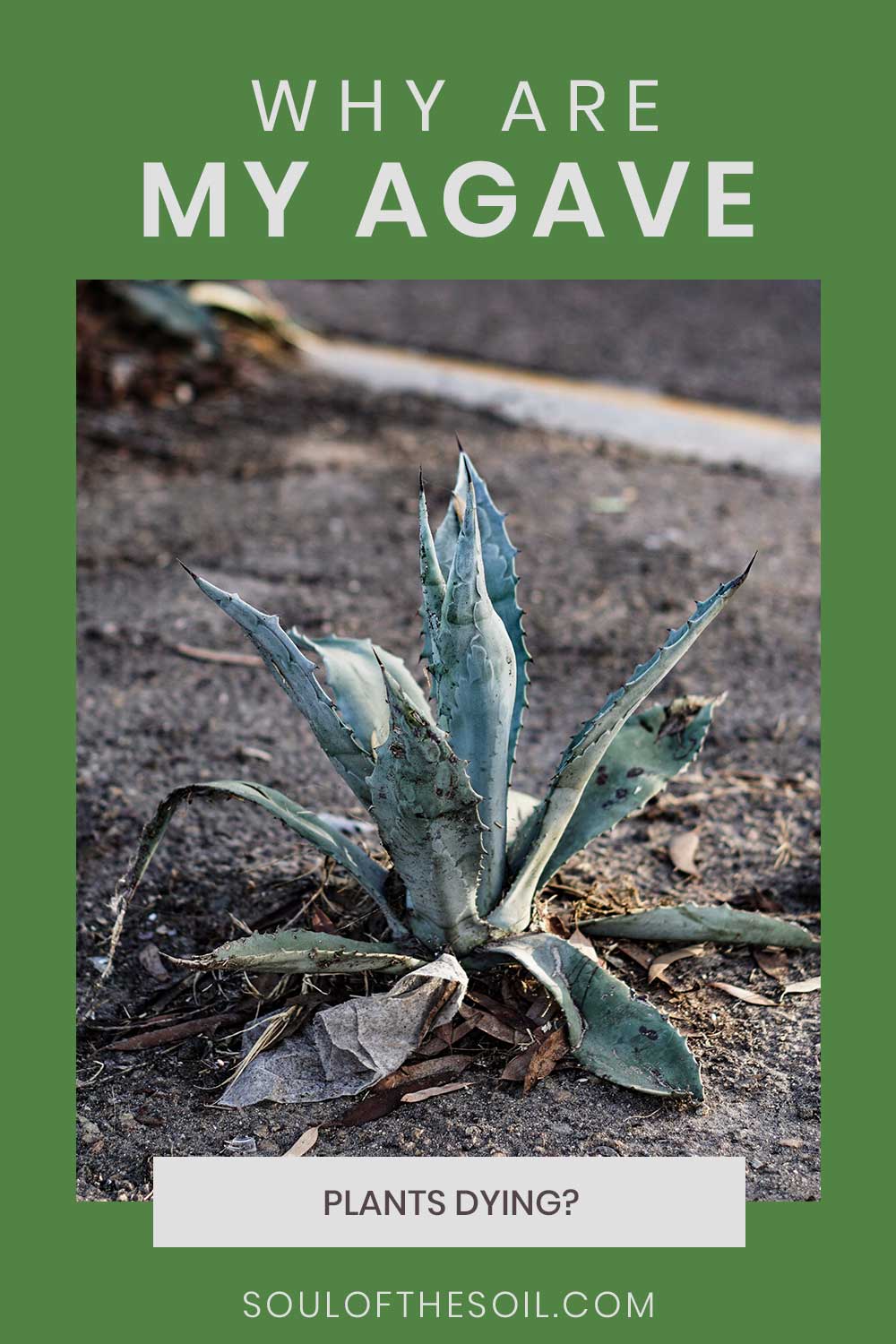Why Are My Agave Plants Dying?
We may earn commissions for purchases made through links on our site. Learn more on our about us page.
Even though agave is a resistant plant that thrives in rock gardens and other arid locations, it is susceptible to bacterial and fungal rots that can cause damage to the plant if it is exposed to excessive moisture and humidity.
The rapid shift from a cool, rainy spring to a hot, humid summer has the potential to encourage the growth of fungi and the spread of pests.

Common Causes for Dying Agave Plants
There are various reasons why an agave plant might be dying. These reasons include the following:
- Freezing
- Sun Damage
- Anthracnose
- Helminthosporium
Do not worry if the agave plant is showing symptoms of any of the issues above, and there are ways that you could save the plant before it is too late.
How do you Save a Dying Agave?
Freezing
If your agave plants have frozen, there are ways you can revive them. First, check the leaves of the agave plant to see if there are any black spots. The agave leaves will become black when they are frozen, and then they will die and fall off gradually.
Agave plants usually bounce back if freezing temperatures only last a few hours. But you should relocate the agave to a warmer spot or inside the house if the freezing temperature lasts for longer periods.
Sun Damage
If your agave plants have sun damage, examine the plant for yellowing leaves. Sunlight causes the yellowing of leaves, and they eventually drop off.
Relocate the plant to a more shaded area if your agave has been sitting in an area with nothing but direct sunlight for an extended amount of time each day. Although agave plants thrive in sunnier climates, the sun can still cause damage.
Anthracnose
Wet weather can also damage agave plants. This can cause anthracnose. Keep a lookout for any orange or red spores on the leaves. If you see any, cut off the leaves and avoid watering the plant for a few days.
Helminthosporium
If your agave is suffering from Helminthosporium, examine the agave for dark, soft spots in the upper area of the plant. This is a sign that the agave is infected with a Helminthosporium fungus that causes leaf rotting.
To cure this, apply fungicides to the upper and lower portions of the leaves as well as the base of the plant.
You should also remove the excessively infected plants to save the spread to the healthier plants.
What Does an Overwatered Agave Look Like?
Spots of a different hue appearing on the leaves are frequently the earliest sign of a problem. The leaves can now appear to be puffed out as well. As the overwatering continues, the leaves will become a yellowish or translucent color and become mushy.
How Can You Tell If Your Agave has a Rotting Root?
Do you think the Agave plant you just bought has root rot? The following are some indicators that something is amiss.
- Lesions near the top of the plant
- Plant overturn
- Leaves with an unhealthy appearance
- Roots with a slimy black or gray coloration
Agave is susceptible to a number of diseases, root rot being one of the most prominent. As a result, this problem can be easily identified.
How Long Does it Take for Agave to Recover?
Agave plants are quite hardy and can thrive in the harshest conditions. However, they are not indestructible. Therefore, when you catch the signs of a dying agave early, you can save it if you take the right steps.
How long it takes to recover depends on what was wrong with it in the first place. However, an agave plant can bounce back in as little as a few days but may take up to a couple of weeks.
Final Thoughts on Why Are Your Agave Plants Dying
There can be many different reasons why your agave plant may be dying. Most of the time, it is due to the plant’s location.
This is an easy fix, as it only means you need to move it to a more suitable spot. But there are other conditions that require a little more to it than a simple relocation.
Do not be discouraged by the signs of a dying agave plant; there may still be time to save it. Once you catch it in time, the agave plant will recover soon enough.



Leave a Reply
You must be logged in to post a comment.